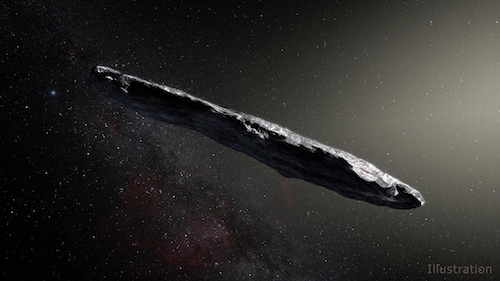DOES PSEUDO-SCIENCE HAVE A PLACE IN SCIENCE FICTION?
/Blogging about the writing of science fiction, I’ve mentioned how tough it is to stay up-to-date on real science and make plausible forecasts about the future. Sometimes scientific theories rejected by the establishment of the time are vindicated by later research, so where do you draw the line between “real” science and ideas labelled “pseudo-science” when it comes to storytelling? After all, we writers take “artistic license” with history and other facts all the time for the sake of a good story (don’t get me started about Hollywood). If you check Wikipedia for a list of topics considered pseudo-science, it’s a long list that includes many established religious beliefs as well as the methods used by your favourite chiropractor or acupuncturist! So how many currently-unprovable concepts are OK to use in science fiction before you’ve blundered across the skeptical divide into fantasy?
Physicists laugh about an esoteric energy called orgone first proposed in the 1930’s by Wilhelm Reich as a kind of universal life force (and still supported by some fringe medical practitioners and others). Yet, what would Star Wars be without The Force? (Mind you it also has ships “making the jump to light speed”, which would have Einstein rolling in his grave so, OK, maybe Star Wars is fantasy.) But Star Trek is science fiction, right? Well, I personally have doubts we’ll ever see transporter technology but it sure makes the stories work better. And think of all of the iconic galactic-empire/federation-type novels that depend on some form of faster-than-light travel because otherwise space is just too damn big. So what if Relativity theory forbids it! The same can be said of time travel, but it’s another of the major tropes of SF and underpins a whole lot of my favourite stories.
Pseudoscience? Or just wishful thinking?
The related concepts of scalar waves, zero point field/energy, and the EM drive are really popular with the fringe crowd, with claims of free energy, propulsion, and healing applications. Even so, zero point energy is used in the ambitious novel Encounter With Tiber co-written by John Barnes and none other than Apollo 11 astronaut Buzz Aldrin. And Arthur C. Clarke gave the book a glowing blurb. Our current understanding of physics insists that, although the vacuum of space has huge energy potential, its equilibrium precludes us making any use of that energy. But who knows what work-arounds could be discovered someday? So is it nonsense to make use of such an idea in purportedly credible SF?
The idea that advanced aliens visited the earth in the past and a) created humans, b) set us on the course toward intelligence (eg. 2001: A Space Odyssey), c) formed the basis for the pantheon of ancient gods and demi-gods, or d) all of the above and more…well it may be mocked as a scientific theory, but has sure proved its potential for some terrific tales.
What about body memory—the thought that memories can reside in body cells other than the brain? I wrote a noir story about a dying man who gets a new body only to discover it isn’t a cloned model but was “previously enjoyed”, because it remembers dying under suspicious circumstances. It’s the title story of a small collection called Body Of Opinion and other stories which you can pick up at my bookstore page. Creepy, but a lot of fun.
One of my very favourite pseudo-scientific concepts in fiction is ESP. I’m a huge fan of John Wyndham’s The Chrysalids with its telepathic communication—I’d love to have that ability, and have used a number of variations on it in my own writing. I think it’s very likely that, when we do encounter an advanced non-human race, communication will also be non-verbal and maybe non-physical. We should prepare by practicing up our mind-melds, don’t you think?
There are a lot more: the concept that our bodies have their own energy field (the qi, for instance), torsion fields for faster-than-light communication, collective memory, various forms of life after death. Heck even the very idea of extraterrestrial aliens is unproven so far.
Pseudoscience?
Only for now, my friend. Only for now.











